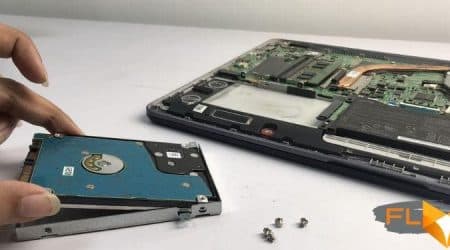The modern world offers incredible convenience when it comes to keeping devices powered and ready for use. Yet, amidst the advancements, numerous beliefs persist regarding the impact of prolonged connectivity to energy sources. These assumptions often cloud the understanding of how to maintain optimal performance and longevity of portable gadgets.
Many individuals harbor concerns about potential damage stemming from extended periods of connection to chargers. Such anxieties can lead to unwarranted practices and habits, consequently affecting the functional lifespan of these indispensable tools. By addressing these notions, one can cultivate a more informed approach to energy management.
Exploring these prevalent beliefs reveals a pathway to informed decisions and enhanced operational efficiency. By gaining clarity, users can ensure their devices serve them faithfully without unnecessary interruptions. Let’s delve into the reality behind these widespread assumptions and empower ourselves with knowledge.
Understanding Overnight Charging Risks
This section explores the potential hazards associated with prolonged energy replenishment practices, particularly during the night. Many individuals have developed a routine of leaving their devices connected to a power source while they sleep, but this behavior may not be as harmless as it seems. Awareness of the implications of such practices can lead to improved device longevity and overall usability.
Potential Dangers
- Battery Degradation: Continuous connection to the power supply can lead to gradual decrease in the capacity of the power unit over time.
- Heat Generation: Extended periods of energy flow can generate excess heat, potentially damaging internal components.
- Software Interactions: Some devices may undergo software updates or maintenance during idle states, causing energy fluctuations that could affect overall performance.
Best Practices to Mitigate Risks
- Utilize Smart Technology: Invest in gadgets equipped with systems that prevent overcharging.
- Regularly Monitor Levels: Check the energy status before sleep to avoid unnecessary connection.
- Consider Timers: Employ timers that limit the duration of connection to reduce the chance of overuse.
Myth: Phones Overheat While Charging
There is a widespread belief that electronic devices become excessively warm during the process of re-energizing. This notion often raises concerns about potential damage and the longevity of the gadgets. However, understanding the mechanics involved can help clarify this misconception.
Modern devices are equipped with advanced thermal management systems designed to regulate temperature effectively. When engaging with a power source, these systems monitor heat levels and adjust the flow of energy accordingly. This ensures that excessive warmth does not become an issue under normal usage conditions.
In specific situations, such as using intensive applications while replenishing power, slight heating may occur. However, this is a natural occurrence and typically does not pose a risk to device integrity. Moreover, reputable manufacturers implement safety features to prevent overheating, which further mitigates any concerns.
In conclusion, while some warmth might be observed during the re-energizing process, the fear of devices overheating is largely unfounded. By utilizing quality equipment and maintaining sensible usage practices, consumers can enjoy their technology without unnecessary anxiety.
Battery Technology Explored
The advancements in energy storage systems have profoundly influenced how we utilize portable gadgets. Understanding the underlying principles of these technologies is essential for optimizing usage and ensuring longevity. This section delves into the components and innovations that shape power sources today.
Types of Energy Storage Systems
Primarily, there are various forms of energy storage solutions available, each with its unique characteristics and applications. Lithium-ion cells have become the gold standard due to their efficiency and capacity to hold significant amounts of energy in a compact form. Other options, such as nickel-metal hydride and solid-state batteries, offer alternative benefits in specific scenarios, yet they remain less common in mainstream gadgets.
Factors Influencing Longevity
Numerous elements contribute to the durability and performance of energy storage systems. Temperature plays a critical role; elevated heat can accelerate degradation, while extreme cold may impair performance. Additionally, cycles of depletion and replenishment impact longevity, emphasizing the importance of avoiding extreme use patterns. Understanding these factors can empower users to make informed decisions and enhance the endurance of their devices while optimizing functionality.
Charging Cycles and Battery Lifespan
The lifespan of a power source is significantly influenced by how often it undergoes a complete cycle of depleting and replenishing energy. This concept holds true for numerous portable electronic devices that rely on rechargeable energy sources. Understanding the dynamics of these cycles can aid individuals in optimizing the longevity of their equipment.
A complete cycle occurs when the energy reserve is utilized from 100% to 0% and then restored back to full capacity. However, it is essential to recognize that partial discharges and charges also contribute to the total cycle count. Frequent shallow discharges followed by quick recharges can still wear down the reserve over time, highlighting the importance of overall usage patterns.
Factors such as temperature, usage intensity, and the age of the energy reservoir all play critical roles in determining its durability. By adopting mindful practices regarding how energy is managed, users can ensure their devices continue performing effectively while extending the functional period of the energy storage component.
Best Practices for Nighttime Charging
Maximizing the longevity and efficiency of energy storage devices during nighttime replenishment involves several key practices. Implementing these methods can lead to enhanced performance and durability.
- Utilize a quality adapter and cable: Ensure that the accessories used are from reputable brands to minimize risks and ensure optimal functionality.
- Keep the device cool: Avoid placing it on soft surfaces like beds or couches that can trap heat. Ideally, use a hard, flat surface to facilitate airflow.
- Activate airplane mode: This reduces background processes and connectivity, which can decrease energy consumption while charging.
- Set an appropriate alarm: If possible, wake up a little earlier to disconnect it manually, which helps avoid prolonged exposure to constant power.
- Monitor updates and settings: Regularly update the operating system and manage settings to prevent unnecessary drain during non-use hours.
By adhering to these strategies, users can significantly enhance the management and longevity of their devices, ensuring they remain reliable throughout the day.
Recognizing Quality Charging Accessories
Choosing the right tools for replenishing energy is crucial for maintaining optimal performance and longevity of devices. The market is flooded with various options, and distinguishing the high-quality from the subpar can significantly improve user experience and device health. Understanding key characteristics will enable consumers to make informed decisions and ensure their gadgets remain reliable.
First and foremost, pay attention to the certifications that indicate compliance with safety and performance standards. Look for products that have been tested and certified by reputable organizations, which can provide peace of mind regarding their effectiveness and safety. This can help in avoiding risks associated with inferior accessories, such as overheating or malfunctioning.
Secondly, consider the material quality used in the manufacture of cables and connectors. Durable materials are less prone to wear and tear, resulting in a longer lifespan and enhanced reliability. High-quality cables often feature reinforced connectors and robust insulation, which can prevent fraying and damage over time.
Lastly, evaluate the reputation of the brand. Established companies with positive customer feedback typically offer trustworthy products. Researching user reviews and ratings can provide insights into the performance and durability of accessories, guiding buyers towards making well-informed choices that contribute to enhanced usability and satisfaction.
Q&A: Charging your phone overnight battery myths debunked
How does leaving your phone plugged in overnight affect its battery health?
Leaving your phone plugged in overnight does not typically cause significant harm to the battery due to modern battery management systems that prevent overcharging. Once the battery reaches 100%, the phone stops charging and uses a “trickle charge” to maintain the battery level. However, keeping your phone at 100% for extended periods can strain the lithium-ion batteries and accelerate battery wear over time. It’s generally better to charge your phone up to 80% to maintain long-term battery health.
Is it a good idea to fully charge your smartphone to 100% every time?
Fully charging your smartphone to 100% every time is not necessary and may reduce the battery’s lifespan. Lithium-ion batteries in most smartphones, including iPhones, perform best when kept between 20% and 80%. Charging past 80% repeatedly can increase the number of charge cycles and strain the battery anode, potentially leading to faster degradation. For optimal battery health, it’s recommended to charge your phone to around 80% and avoid letting the battery drop too low.
Does using your phone while it charges harm the battery or reduce its efficiency?
Using your phone while it charges doesn’t significantly harm the battery or reduce its efficiency, but it can cause the phone to heat up, which may affect the battery in the long run. Heat is one of the main factors that can damage lithium-ion batteries, and using your phone during charging can raise its temperature, especially when performing heavy tasks. To maintain battery efficiency, try to avoid high-demand activities, like gaming or streaming, while charging.
What are some common smartphone battery myths that can affect charging habits?
One common smartphone battery myth is that you need to let the battery drain completely before charging it again. In fact, lithium-ion batteries used in modern smartphones, like the iPhone, perform best when kept between 20% and 80% and don’t need to be fully drained. Another myth is that leaving your phone plugged in overnight will overcharge it. In reality, most devices have battery management systems that stop charging once the battery reaches 100%, preventing damage from continuous charging.
How does charging your phone overnight affect battery life and health?
Charging your phone overnight doesn’t significantly harm the battery because most modern smartphones are equipped with battery management systems that stop charging once the battery reaches 100%. However, keeping your phone at full charge for long periods can slowly affect battery capacity over time. It is recommended to avoid consistently keeping the battery fully charged and instead aim for a charging range between 20% and 80% to maintain better long-term battery health.
Does fast charging damage the battery or reduce battery life?
Fast charging can cause the phone’s battery to heat up more quickly, which may affect the battery’s capacity over time. However, the impact on battery life is minimal with occasional use, as most smartphones, including iPhones, are designed to handle fast charging without significant damage. To reduce strain on the battery, it’s a good idea to alternate between fast charging and slower charging methods when possible, especially if you want to maintain battery capacity.
Is it harmful to leave your phone charging after it reaches 100%?
Leaving your phone charging after it reaches 100% does not cause immediate damage to the battery, as charging stops when the battery is fully charged. However, keeping your phone at a full charge for extended periods can put strain on the battery and reduce its lifespan over time. It’s recommended to unplug your phone after it reaches a full charge or try to charge it back to around 80% to prevent unnecessary stress on the battery.
Why is it recommended to avoid draining the battery completely before charging it back up?
Draining your phone’s battery completely before charging it back up is one of the common battery myths that can actually harm your battery. Modern lithium-ion batteries do not need to be fully drained before charging. Allowing the battery to drop too low frequently can put strain on the device’s battery and reduce its overall lifespan. Keeping the battery level between 20% and 80% is better for long-term battery health and efficiency.





